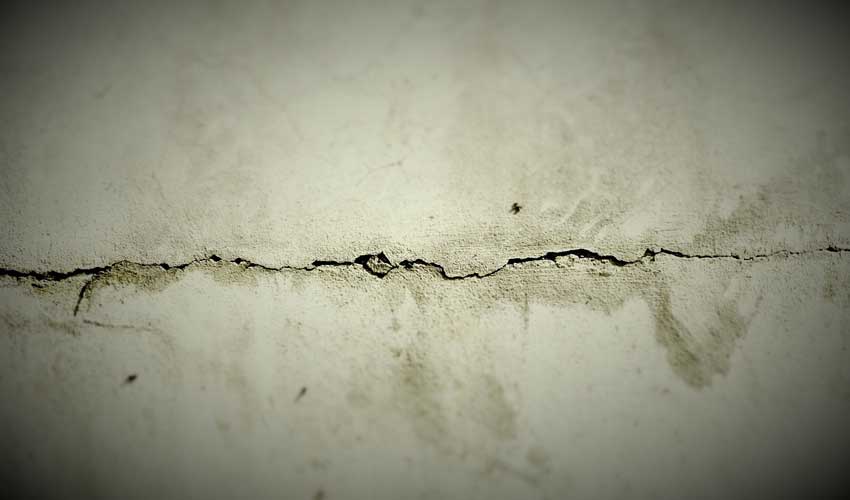Can You Fix Concrete Cracks?

Up until now, concrete cracks have been the nemesis of the construction industry. In fact, there’s an old joke that there are two types of concrete. The first type is concrete that has cracked. The second type is concrete that hasn’t cracked…yet. But is there something new on the way?
Concrete “flatwork,” that is, concrete poured in slabs for floors, sidewalks, driveways, and roads, is particularly prone to cracking. It will shrink as it “cures” and crack. And it will continue to swell and shrink when it gets warmer or cooler and be susceptible to developing more cracks.
There are measures you can take to reduce the chances of cracking. Control joints and expansion joints can be placed in the surface. Expansion joints are gaps purposely placed and filled with flexible material. Treated wood strips, cork strips and caulking are commonly used. The flexible material “gives” when the concrete moves and takes up the dimensional change, preventing cracking. Expansion joints are usually only placed in large expanses of concrete.
Control joints are smaller grooves placed in concrete. These are placed minimally at ten foot spaces or less. The idea is to place them to create approximately square panels so the expansion and contraction of each segment is about equal in each direction. So a four foot wide sidewalk might get control joints every four feet. Control joints actually weaken the concrete at that spot with the idea being that when a crack occurs, it will occur within the control joint and not be visible, irregular, and unsightly. Of course, we have all seen plenty of concrete slabs that have cracks running right along side a control joint, completely ignoring the groove they were supposed to follow. So this is no surefire method for avoiding cracks.
There are no good ways to fix concrete cracks. They are usually irregular, jagged lines. Filling them with caulking will keep water from filling the crack and increasing the damage as it freezes and thaws. But the crack will remain visible and even be accentuated by the color of the caulking. You can chop out the cracked portion of the driveway or walk and replace the concrete. The problem with this is the new concrete will always be a different color than the original. So the patch will stand out.
But leave it to the innovators in the world. There may be a cure, at last. Check out this video on Bio-Concrete.
This clever young man has added bacteria and food for the bacteria into concrete. When a crack occurs, the bacteria start growing and build a calcium based filler in the concrete that is strong, keeps the water out, and is much more visible discreet than any other filler you could use. I can’t wait for this to hit the market.
My son, Matt Hirsch, told me about bio-concrete. He also works with bacteria. Only his bacteria are a relatively newly discovered type that can remove nitrates from ponds, lakes, and streams. I believe him when he tells me that microbiology holds many keys to a better world.
I hope this information is helpful to you. You might want to get yourself a copy of my best-seller, Designing Your Perfect House. It is chockfull of valuable tips and advice that will save you many times the cost of the book on your house building or remodeling project. You might also like The Well-Centered Home: Simple Steps to Increase Mindfulness, Self-Awareness, and Happiness Where You Live. It will show you how to make your home a happy place.


Thanks for the great post. I always try to bookmark construction or concrete related posts like this one.
Hello!
Thank you for posting this article, concrete work is always problematic area, it will crack anyway 🙂 sooner or later, of course the crack can be caulked, but as you mentioned it will still remain visible, the information about living bacteria is great, yes let’s hope it will hit the market soon, and the crack in the concrete will be in the past.